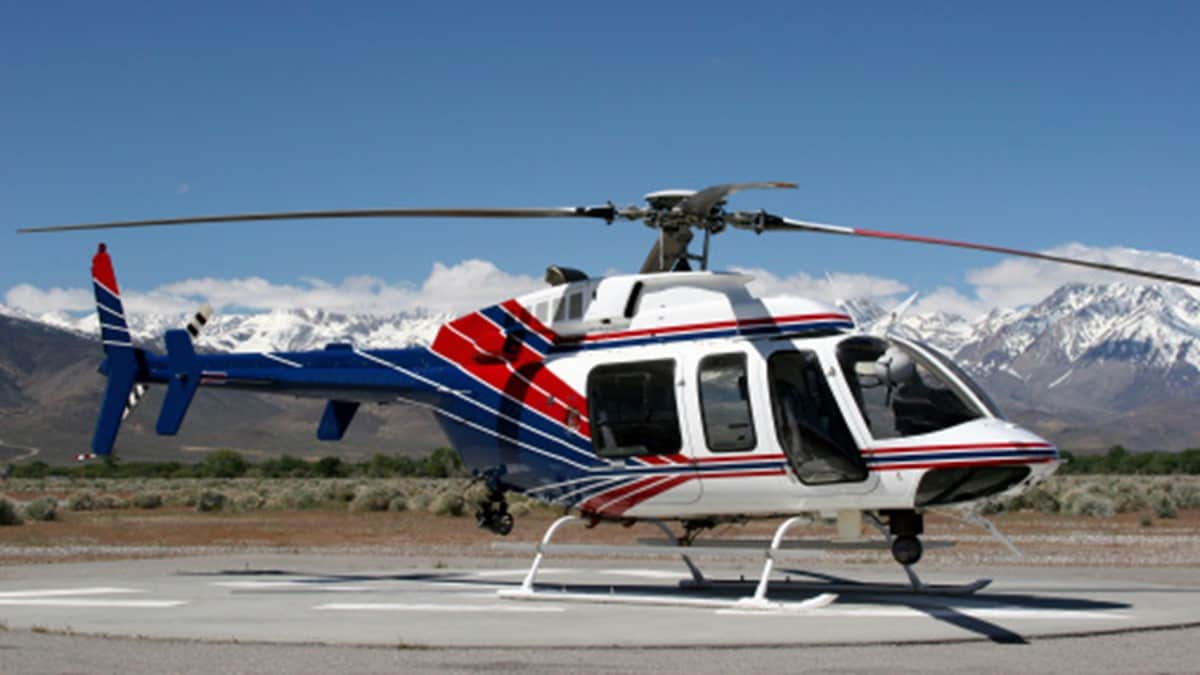What to know
- Aerial spraying is used to control and reduce the number of mosquitoes that can spread viruses.
- Aerial spraying can reduce your chances of getting sick from a mosquito-borne disease.
- Airplanes and helicopters can treat areas with larvicides or adulticides to kill mosquito larvae or adult mosquitoes.

What you need to know about aerial spraying
Airplanes and helicopters can be used to treat very large areas with larvicides or adulticides to kill mosquito larvae or adult mosquitoes. This process is called aerial spraying. Aerial spraying is used to:
- Control and reduce the number of mosquitoes that can spread viruses. This can reduce your chances of getting sick.
- Control and reduce the number of nuisance mosquitoes that bother people but do not spread viruses.
Mosquito control districts or local government departments track both nuisance mosquitoes and mosquitoes that can spread viruses. When large numbers of nuisance or infected mosquitoes are found or when people in a large area are getting sick, airplanes and helicopters can treat very large areas with insecticides safely, quickly, and efficiently.
Aerial spraying is safe
- When applied according to label instructions, Environmental Protection Agency (EPA)-registered insecticides do not pose a risk to human health or the environment.
- If people prefer to stay inside when spraying takes place they can, but it is not necessary.
- When aerial spraying is done correctly, it does not cause asthma attacks.
What aerial spraying does
Airplanes and helicopters spray products that quickly kill either adult mosquitoes or mosquito larvae to reduce the number of mosquitoes in an area.
- Spraying larvicides kills mosquito larvae that hatch from eggs.
- Spraying adulticides quickly kills flying mosquitoes.
- Both larvicides and adulticides temporarily reduce the number of mosquitoes in an area, but do not permanently get rid of them.
How aerial spraying works
- Very low volumes of either adulticide or larvicide are sprayed in areas where mosquitoes are present.
- Aerial spraying of larvicides can occur at any time.
- Aerial spraying of adulticides occurs when mosquitoes are most active and when pollinating insects are not active.
- Aerial spraying is more effective and faster than truck-mounted or handheld sprayers when treating large areas of land.
How to find out when aerial spraying will occur
Generally, local government agencies or mosquito control districts announce the dates and times of spraying. They may publish information in a local newspaper, on district websites and social media, through public service announcements, by telephone, or with door-to-door campaigns.
What to do when aerial spraying occurs
You do not need to leave an area during aerial spraying. When applied by a licensed vector control professional who follows label instructions, aerial spraying poses minimal risk to people, pets, animals, and the environment.
Because aerial spraying uses very low volumes of either adulticide or larvicide, you aren’t likely to breathe or touch anything that has enough insecticide on it to harm you. There is a possibility that spraying larvicides, like Bti, or adulticides can cause eye irritation if a person is outside when spraying takes place.
Information on insecticides and health
- EPA oversees registration of insecticides.
- The National Pesticide Information Center (NPIC) provides information online or through a toll-free number, 1-800-858-7378.
References
- Carney RM, Husted S, Jean C, Glaser C, Kramer V. Efficacy of aerial spraying of mosquito adulticide in reducing incidence of West Nile Virus, California, 2005. Emerg Infect Dis. 2008 May;14(5):747-54.
- Centers for Disease Control and Prevention. Human exposure to mosquito-control pesticides – Mississippi, North Carolina, and Virginia, 2002 and 2003. Morb Mortal Wkly Rep. 2005 June;54(21):529-32.
- Duprey Z, Rivers S, Luber G, Becker A, Blackmore C, Barr D, et al. Community aerial mosquito control and naled exposure. J Am Mosq Control Assoc. 2008 Mar;24(1):42-6.
- Geraghty EM, Margolis HG, Kjemtrup A, Reisen W, Franks P. Correlation between aerial insecticide spraying to interrupt West Nile virus transmission and emergency department visits in Sacramento County, California. Public Health Rep. 2013 May–Jun;128(3):221-30.
- Holcomb KM, Reiner RC, Barker CM. Spatio-temporal impacts of aerial adulticide applications on populations of West Nile virus vector mosquitoes. Parasites & Vectors. 2021;14(1):120.
- Karpati AM, Perrin MC, Matte T, Leighton J, Schwartz J, Barr RG. Pesticide spraying for West Nile virus control and emergency department asthma visits in New York City, 2000. Environ Health Perspect. 2004 Aug;112(11):1183-7.
- Lothrop HD, Lothrop BB, Gomsi DE, Reisen WK. Intensive early season adulticide applications decrease arbovirus transmission through the Coachella Valley, Riverside County, California. Vector Borne Zoonotic Dis.2008 Aug;8(4):475-89.
- Macedo PA, Schleier JJ, Reed M, et al. Evaluation of efficacy and human health risk of aerial ultra-low volume applications of pyrethrins and piperonyl butoxide for adult mosquito management in response to West Nile virus activity in Sacramento County, California. J M Mosq Control Assoc. 2010;26(1):57-66.
- Mendoza DL, Peterson RKD, Bonds JAS, White GS, Faraji A. Are adult mosquito control products (adulticides) harmful? A review of the potential human health impacts from exposure to naled and dichlorvos (DDVP). Pollutants. 2023;3(4):603-15.
- Ruktanonchai DJ, Stonecipher S, Lindsey N, et al. Effect of aerial insecticide spraying on West Nile virus disease – North-Central Texas, 2012. Am J Trop Med Hyg. 2014 Aug 6;91(2):240-45.
- Tai Z, Connelly CR, Lange SK, Foley N, De Leon Rivera J, Lozano S, Nett RJ. A scoping review to determine if adverse human health effects are associated with use of organophosphates for mosquito control. J Med Entomol. 2024 Oct 19;62(1):8-18.
